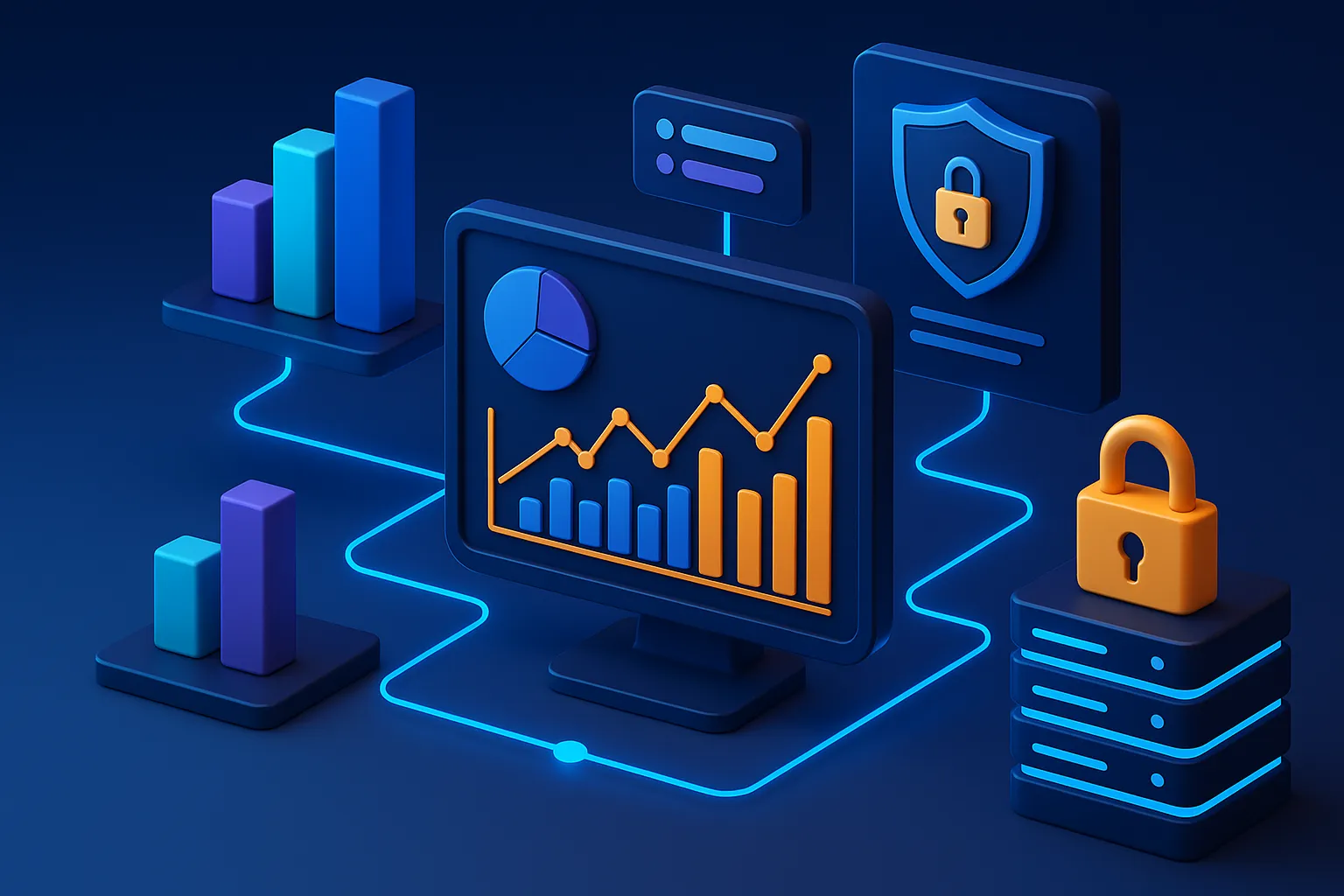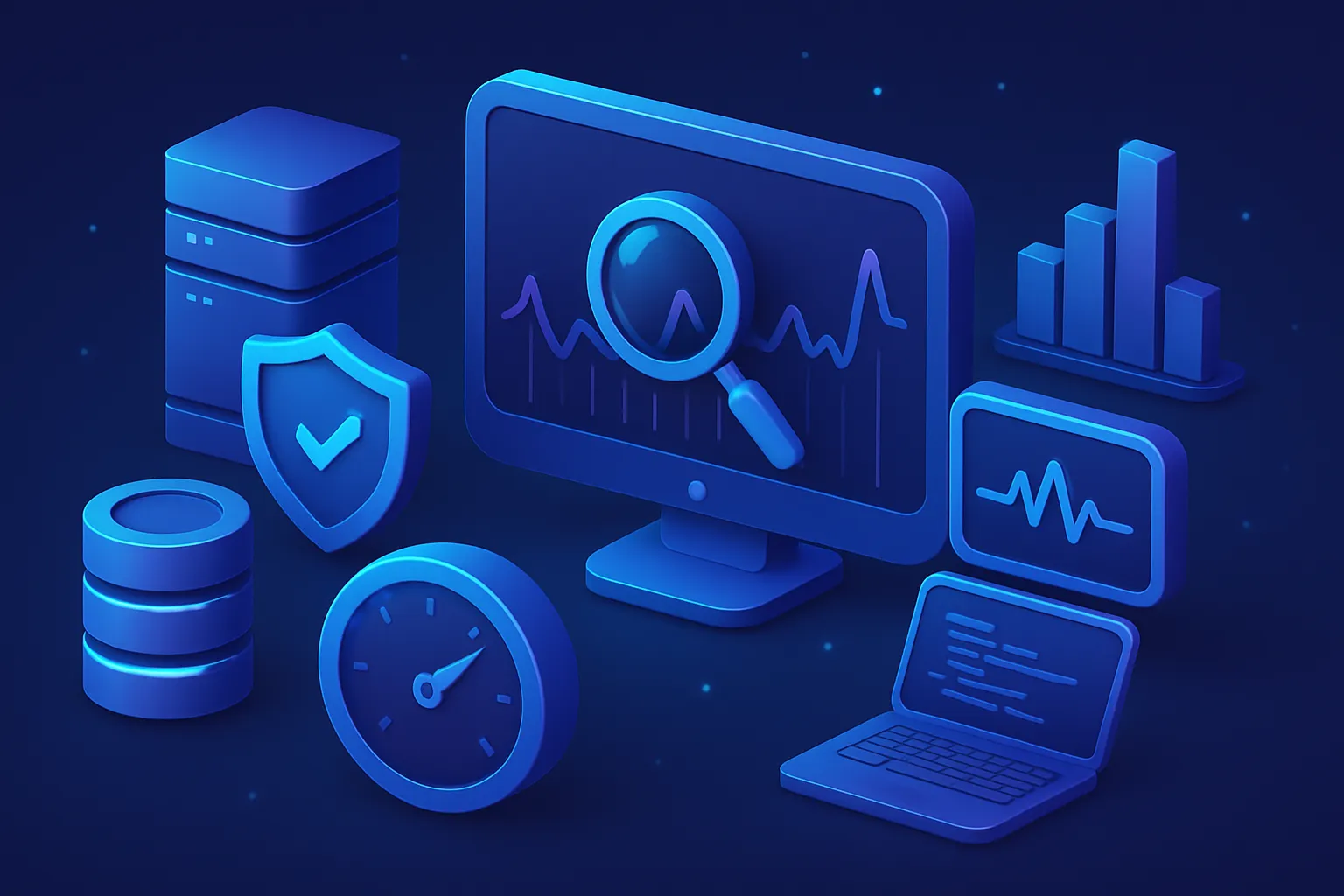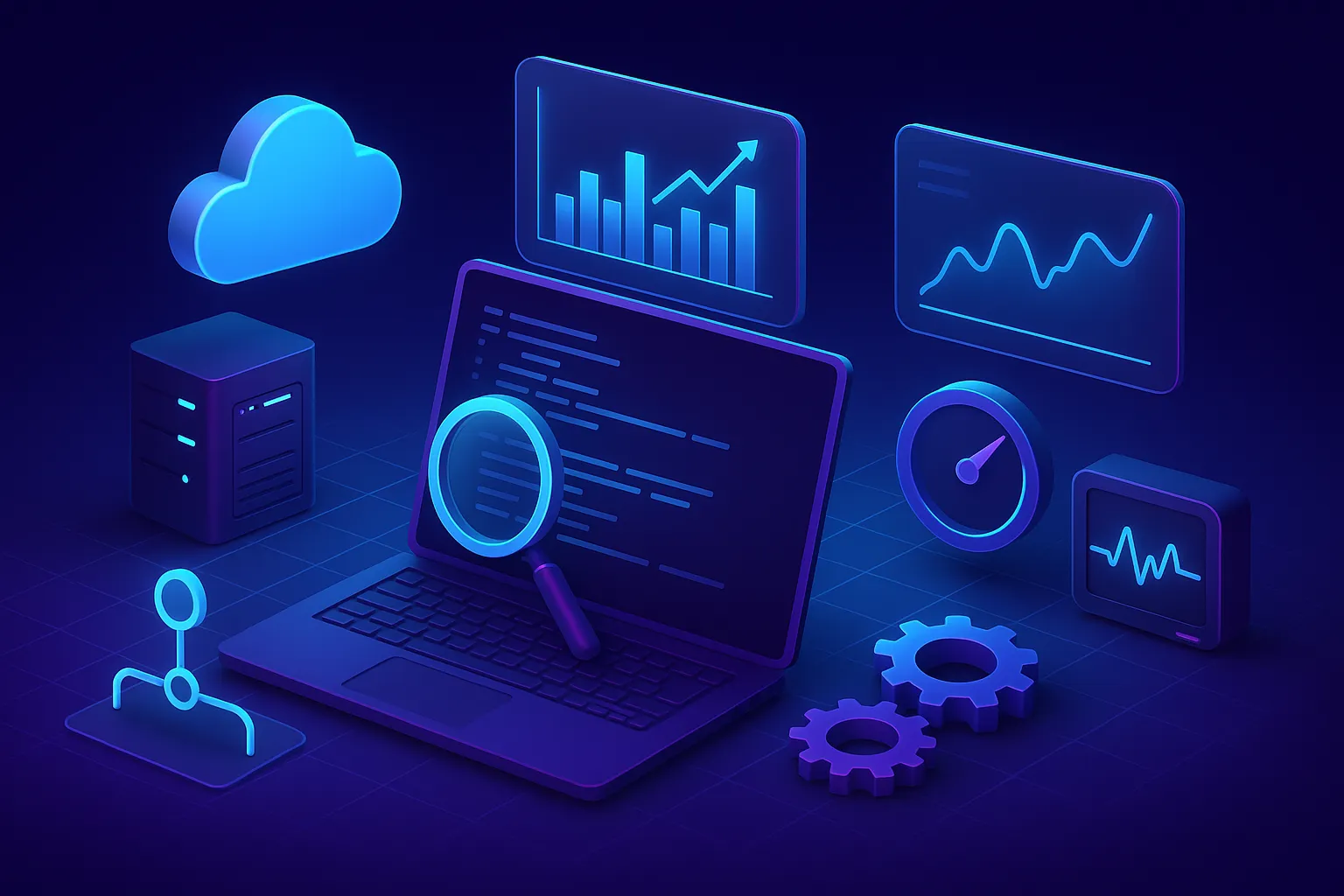August 13, 2025
August 13, 2025

Imagine your IT infrastructure as a living organism breathing, reacting, adapting. Now imagine monitoring it not just to “check if it’s alive,” but to truly understand how it's feeling, performing, and protecting itself. That’s the real essence of modern IT Monitoring.
In a world driven by speed, data, and automation, IT Monitoring has evolved from a passive watchdog into a proactive intelligence engine. This article breaks away from the traditional view and dives deep into how it can supercharge operations, preempt disruptions, and become your first line of defense against digital threats.
At its core, IT Monitoring refers to the process of continuously tracking and analyzing the performance, availability, and health of your IT systems from servers and networks to applications and databases. But in today’s fast-moving tech environment, it’s also about anticipating issues before they occur, spotting subtle anomalies, and enabling teams to make data-driven decisions in real time.
Unlike legacy systems that simply alert when something breaks, modern IT Monitoring solutions offer a comprehensive, proactive view of the entire technology stack. These tools can trace a slowdown in user experience back to a single microservice failure, or flag unusual network behavior before it turns into a breach.

To fully understand its power, let’s break down some of the most common types of IT Monitoring:
Each type plays a crucial role in building an agile, resilient, and secure IT operation, one that’s not just reacting to fire drills but actively shaping the digital experience.
Because in the digital age, “not knowing” is the most expensive risk you can take.
Every second your systems are running blind without visibility into performance, usage, or threats you’re gambling with downtime, data loss, and customer trust. IT Monitoring is your operational radar, providing the clarity and foresight needed to stay ahead in a hyper-connected world.
Here’s why it matters more than ever:
1. It Prevents Small Glitches from Becoming Major Failures
Tiny issues a memory leak, a misconfigured load balancer, a spike in API response time can snowball into system-wide outages. With real-time alerts and historical insights, IT Monitoring empowers teams to catch problems early, long before users notice them.
2. It Keeps Operations Agile and Efficient
Instead of reacting to complaints or fire-fighting when something breaks, IT teams equipped with robust monitoring can optimize resources proactively. They can analyze trends, detect bottlenecks, and adjust capacity based on actual demand, not guesswork.
3. It Strengthens Security Posture
Monitoring isn’t just about performance, it’s also about visibility into the unknown. Unusual login patterns, unexpected spikes in outbound traffic, or unauthorized process executions can be caught early with intelligent monitoring. It’s your silent guardian against internal mishaps and external threats.
4. It Enhances User Experience
Slow page load times? App freezing? Laggy API responses? End users rarely know the cause but they always feel the impact. IT Monitoring allows businesses to map user experience to technical performance, making it easier to deliver fast, stable, and reliable digital services.
5. It Enables Smarter Decision-Making
Data collected from monitoring isn’t just for troubleshooting, it’s a strategic asset. With the right analytics layer, teams can make informed decisions about upgrades, migrations, and even business investments based on real-world usage and system behavior.
In short, IT Monitoring isn’t a luxury, it’s a necessity. It's what separates companies that react… from those that lead.
where a well-architected IT Monitoring system comes in: not as a single tool, but as a coordinated ecosystem of components working together to provide total observability.

Let’s break it down
Each component plays a unique role in turning raw system behavior into actionable insights:
1. Data Collection Agents
These lightweight programs run on servers, endpoints, or cloud instances, continuously gathering metrics CPU usage, memory, network throughput, disk I/O, service statuses, etc. Without them, your monitoring would be blind.
2. Metrics and Log Aggregation
Collected data is centralized, normalized, and stored in scalable databases. Metrics (quantitative data) and logs (event data) are kept in sync to enable both real-time and retrospective analysis.
3. Real-Time Alerting Engine
The heart of proactive monitoring. This component sets thresholds, detects anomalies, and pushes alerts when something drifts out of the norm before it becomes a crisis.
4. Dashboards and Visualizations
Raw data isn’t helpful unless it’s readable. Dashboards provide visual interfaces for teams to track performance, trends, and incident response, often in real time.
5. Automation and Self-Healing Workflows
Modern monitoring doesn’t just tell you what’s wrong, it fixes it. Many platforms integrate with scripts, APIs, or orchestration tools (like Ansible or Kubernetes) to trigger automated recovery workflows.
The market offers a wide range of IT monitoring solutions, each with its strengths. Here are some widely adopted tools across different categories:
Each of these tools brings a different lens to monitoring from deep infrastructure visibility to fine-grained application performance. The best-fit choice depends on your stack, your goals, and your team’s operational maturity.
In modern IT environments, performance is everything, not just for machines, but for the teams that run them. IT Monitoring acts as the silent accelerator, helping organizations streamline workflows, eliminate waste, and operate at peak efficiency.

Here’s how it drives real-world improvements in operational performance:
1. From Reactive to Proactive Operations
Without monitoring, IT teams often operate in firefighting mode responding to user complaints, unexpected crashes, or mysterious slowdowns. Monitoring flips this dynamic:
This shift from reaction to prevention means less downtime, fewer emergencies, and more time for strategic work.
2. Bottleneck Detection and Resource Optimization
Every IT system has limits but without visibility, those limits sneak up on you. Monitoring helps you:
3. Enabling Intelligent Automation
Efficiency isn’t just about awareness, it’s about automating what you already know. Monitoring tools can trigger predefined actions when thresholds are breached:
This means faster recovery, lower MTTR (Mean Time to Repair), and 24/7 responsiveness, even while your team sleeps.
4. Unifying Cross-Team Visibility
IT operations often involve siloed teams, DevOps, network admins, security engineers, support. Monitoring brings them onto the same page with:
5. Driving Continuous Improvement
Monitoring isn’t just a safety net, it’s a performance tuning engine. By analyzing trends over time, teams can:
This creates a culture of continuous improvement, rooted in real data instead of guesswork.
In short, IT Monitoring turns “keeping the lights on” into a data-driven strategy for operational excellence. It's not just about knowing what happened, it's about empowering what comes next.
Successful IT Monitoring isn’t about plugging in a tool and hoping for insights. It’s about laying a strategic foundation that aligns with your infrastructure, business needs, and operational maturity. Below are key best practices to help organizations implement IT Monitoring in a way that is scalable, actionable, and truly effective.

Define Clear and Measurable Objectives
Before deploying any monitoring tools, organizations must first identify what they aim to achieve. This includes clarifying which systems and services are mission-critical, what constitutes normal versus abnormal behavior, and which metrics are essential to track.
Choose Tools That Match Your Environment
The “best” tool is the one that integrates seamlessly with your existing stack and workflows. Open-source tools may offer flexibility for highly customized environments, while commercial platforms may provide faster time-to-value and better support. Consider factors such as compatibility with cloud or on-prem systems, ease of deployment, scalability, and your internal team's skill set.
Configure Alerts Thoughtfully
Excessive alerts lead to fatigue; insufficient alerts lead to oversight. Avoid both by setting thresholds based on historical baselines and actual performance patterns. Group related alerts to avoid duplication and prioritize them by severity.
Correlate Logs, Metrics, and Events
Monitoring becomes exponentially more powerful when it combines data from multiple sources. Instead of viewing metrics, logs, and events in silos, aim to build a unified monitoring approach that can surface correlations. This not only accelerates root-cause analysis but also provides valuable context during incident response.
Ensure Monitoring Is a Team Responsibility
Monitoring should not sit solely within the operations team. Developers, security engineers, and even product managers can all benefit from visibility into system performance. Educating teams on how to interpret dashboards, respond to alerts, and act on insights helps foster a culture of shared responsibility and operational awareness.
Monitor the Monitoring System
Ironically, one of the most overlooked best practices is ensuring that the monitoring system itself is being monitored. Ensure high availability for monitoring infrastructure, establish redundancy for critical data collectors, and use external probes to validate whether your systems are truly accessible from the outside world.
Implementing IT Monitoring effectively is not just about tools, but about clarity, discipline, and iteration. Organizations that follow these principles are better positioned to respond to issues faster, optimize performance, and build digital systems that are both resilient and scalable.
Conclusion
IT Monitoring is becoming the invisible backbone of modern digital infrastructure, not because it adds complexity, but because it strips complexity away. When systems grow more distributed, user expectations rise, and security threats evolve by the hour, visibility becomes non-negotiable.
But visibility alone isn’t enough. What defines successful organizations today is their ability to act on insight, to detect patterns before they become problems, to automate decisions at scale, and to align IT performance with business outcomes in real time.
In the end, investing in IT Monitoring is not about building a control center. It’s about enabling clarity, the kind of clarity that drives better products, faster recovery, and more resilient operations, even in the face of constant change.